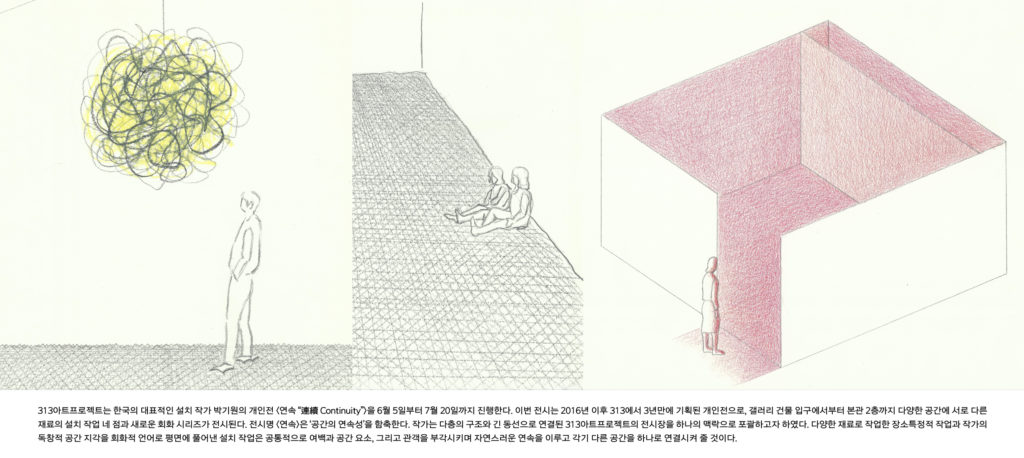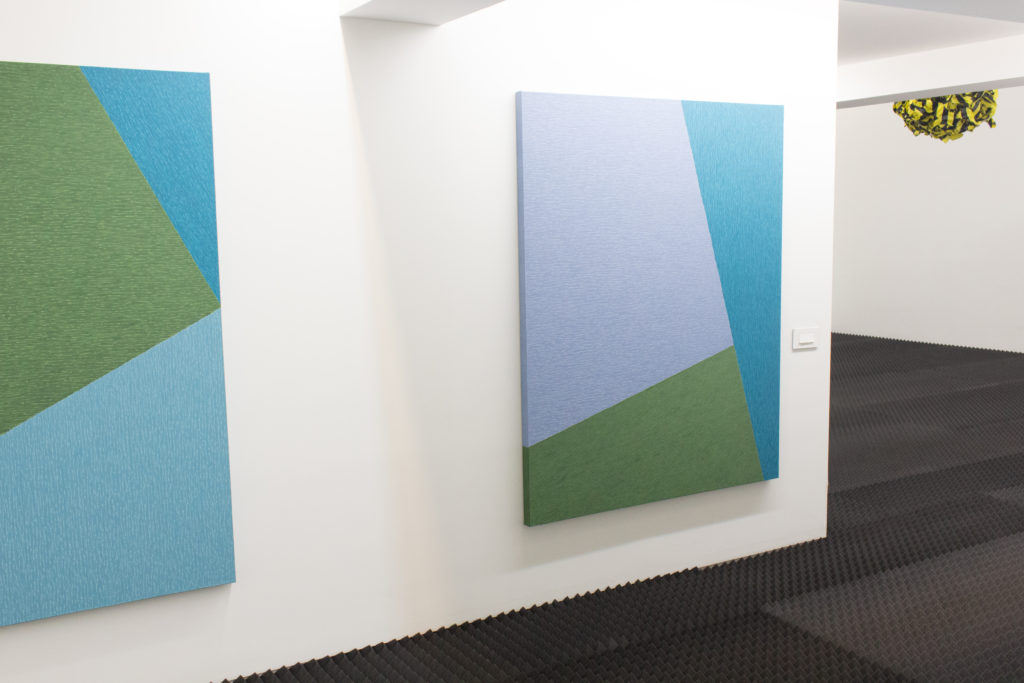Continuity
연속
June 5 – July 20, 2019
Artist Kiwon Park works with one or two simple materials to create works that meld into the space in which they are displayed. At times, due to how effortlessly Park’s artwork becomes one with the site, until someone mentions, “This is a part of the work, too,” it is often difficult to discern the work from the environment. At others, the floor and walls of the site are completely camouflaged by foreign materials that it essentially becomes unrecognizable from its original form. In any case, Park emphasizes and further utilizes the identity of each space by covering its surface with materials such as industrial varnish, tape, or vinyl, essentially, a third skin.
In the artist’s latest exhibition <Continuity>, Park arranges his works to flow with the overall characteristics of the space. Although the works on display have all been made this year and the previous, they are all extensions of the series he had introduced before. From the very entrance of the exhibition space, the audience unknowingly becomes enveloped in the jade green FRP plastic walls titled “Disappear Entrance.” This installation has developed from “Diminish,” the walls that surrounded the exterior of the Korean Pavilion in the 2005 Venice Biennale as well as “Movement,” first shown in 1996. Upon entering the exhibition space, the sharp points of the “Pyramid Ground” tickles the feet, similar to how the 2008 steel scourge work “Friction” surprised the audience with its softness. The “X Mobile,” a scrunched up ball of black and yellow tape, and “Red Room,” which stains the exhibition room red with lights from the LED and vinyl of the same color, and “Width,” the painting series that the artist has continued to develop since 2007, have all been works that Park has presented in the past ten years, through which the audience can understand that the artist’s interests lie in the passage, or “continuity,” of time.
However, one thing to note in particular about this exhibition is the “continuity” with which the individual works are displayed. Oftentimes, Park links together the separate rooms of the exhibition space into one large installation work, accentuating the magnanimity of site itself. However, because 313 Art Project’s gallery space is divided into two separate buildings and multiple rooms, instead of forcing the different spaces under one overarching theme, Park installed distinctive works in each room. Therefore, instead of being perceived as simply an anthology of Park’s most renowned series, the exhibition ends and continues again with the passageways of the space, imbuing a dynamic rhythm to the experience. The first exhibition space of Building A guides visitors past the green walls to Building B, where countless sharp pyramids await at the main lobby floor. The audience’s gaze lifts from the floor to the mobile hanging from the ceiling, where the architectural lines and planes invites the footsteps of the audience. Upon reaching the 2nd floor, the flatness of the oil painting on Korean traditional paper creates a stark contrast between the red light seeping past the doorway and the vast white walls. The exhibition space transforms into a place where the audience can stay and appreciate the site for what it is, in accordance with the artist’s original intent. In an exhibition where the works converse with each other, Kiwon Park reveals all facets of his works, awakening the audience’s senses.
Written by Sora Kim, Chief Curator of OCI Museum of Art / Text retrieved from Monthly Art (2019, July)
작가 박기원의 작업을 돌이켜보면, 그는 복잡하지 않은 한두 가지의 재료를 적용하여 공간에 자연스럽게 스며드는 작품을 만들어왔다. 때로는 “이것도 작품이에요”라고 누군가 일러주기 전에는 채 알아차릴 수도 없을 정도로 주변과 어우러지는 작업을 설치하고, 또 어느 때에는 도리어 전시장의 바닥과 벽면을 전혀 다른 재질의 재료로 덧씌워 이전의 모습이 기억조차 나지 않게끔 공간의 분위기를 바꾸기도 한다. 어느 경우일지라도 박기원은 공간 고유의 개성을 최대한 드러내고 활용하면서 그 표면에 공업용 바니시, 테이프, 비닐 등으로 제3의 피부를 입혀왔다.
이번 개인전 <연속>에서도 박기원은 전시 공간의 특성을 거스르지 않으며 작품을 배치한다. 출품작은 모두 지난해와 올해 사이에 만들어진 것이나, 대부분은 기존 발표작의 연장선에 있다. 전시장 입구의 계단에서부터 관객은 스스로 인지하지도 못할 사이에 옥색 반투명 플라스틱 벽 <사라진 입구>로 둘러싸인다. 이 작업은 지난 2005년 베니스 비엔날레 한국관의 외관을 감쌌던 작가의 <Diminish>와 연계되며 1996년 작 <움직임>에서부터 시도된 것이다. 이어, 조심스럽게 전시장 문을 열고 들어가면 발바닥을 간질이는 뾰족뾰족 삼각뿔 모양의 <피라미드 바닥>이 의외로 보드라운 감촉이었던 철 수세미 바닥 <마찰>(2008)을 떠올리게 하며, 안전테이프를 뭉쳐 놓은 <X모빌/피라미드 바닥>이나 붉은 LED 전구와 비닐로 발긋하게 물든 <레드룸>, 그리고 2007년부터 그려온 <넓이> 연작까지 출품작은 지난 10여년동안 꾸준히 선보인 유형으로 작가의 관심사가 시간의 흐름을 따라 ‘연속’되고 있음을 확인할 수 있다.
하지만 이 전시에서 눈여겨봐야 할 지점은 각각의 작품이 연결되는 공간적 ‘연속’, 즉 전시의 구성이다. 박기원은 종종 전시장을 통째로 하나의 작품으로 연출하며 그로부터 거대하게 존재를 드러내는 공간감을 주요하게 다뤄왔다. 그런데 이번에는 전시장이 두 채의 건물과 여러 개의 방으로 나뉘어 있자, 하나의 통일된 분위기를 억지로 구하기보다 차라리 방마다 각기 다른 작업을 배치했다. 자칫 박기원의 대표작을 모아놓은 앤솔로지(anthology) 형식에 그칠 수도 있는 전시인데, 작품을 향하는 시선이 이어지고 또 끊어지면서 자연스럽게 동선이 형성되어 전시의 리듬이 생겨났다. 도로변의 전시장은 자연스럽게 옥색 담장을 따라 위채로 안내되고, 로비에 들어서자마자 전시장 바닥을 향하던 시선은 말랑거리는 재질의 삼각뿔 꼭짓점을 타고 위를 바라보게 되고, 천장에 매달린 모빌은 2층으로 이어지는 건축적 라인, 수직/수평/사선을 드러내며 발걸음을 그리로 옮기게 한다. 이어 장지에 그려진 회화의 평평함은 새어 나오는 빛으로 경계가 또렷해진 흰 벽면의 넓적함을 도드라지게 하고, 이는 대조적으로 방 안에서 빛으로 더욱 풍부해진 대기의 일렁이는 덩어리감으로 지각을 이끌며 마침내 전시 전체는 작가가 종종 바라던 ‘머물 수 있고’, ‘거닐 수 있는’ 장소로 전환된다. 작품들끼리 조곤조곤 이야기를 나누듯 부드럽게 이어지는 이 전시는 박기원 작업의 다양한 면모를 보여주며 관객에게도 서로 다른 감각이 깨어나는 즐거움을 선사한다.
출처 월간미술 2019년 7월호 p.151 / 김소라, OCI 미술관 수석 큐레이터
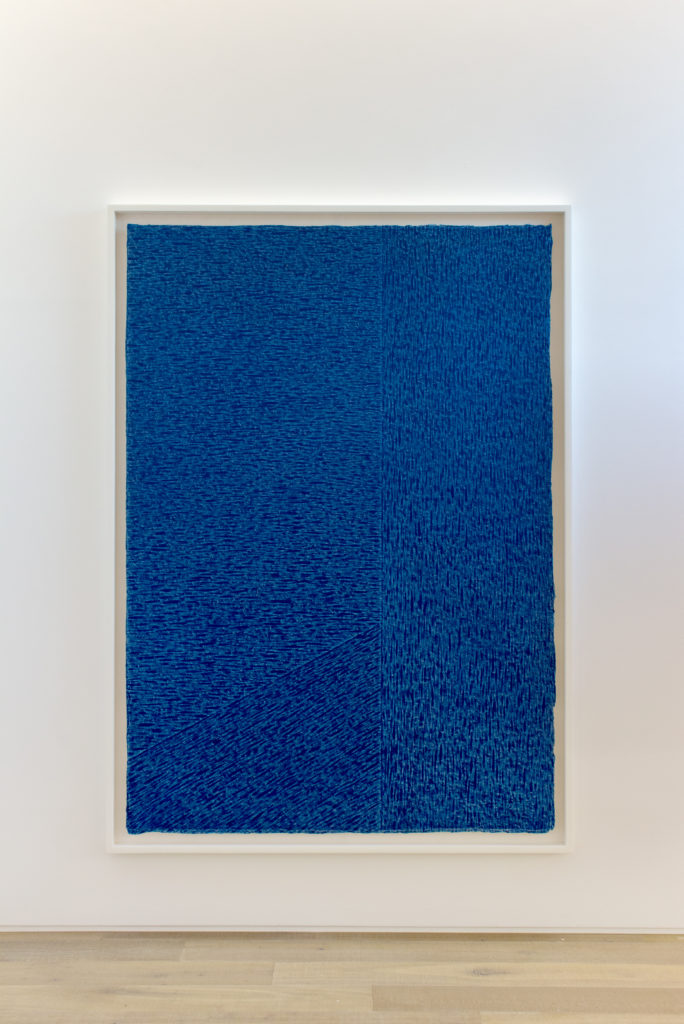 Width 161, 2019, Oil on Korean traditional paper, 215 x 151 cm
Width 161, 2019, Oil on Korean traditional paper, 215 x 151 cm
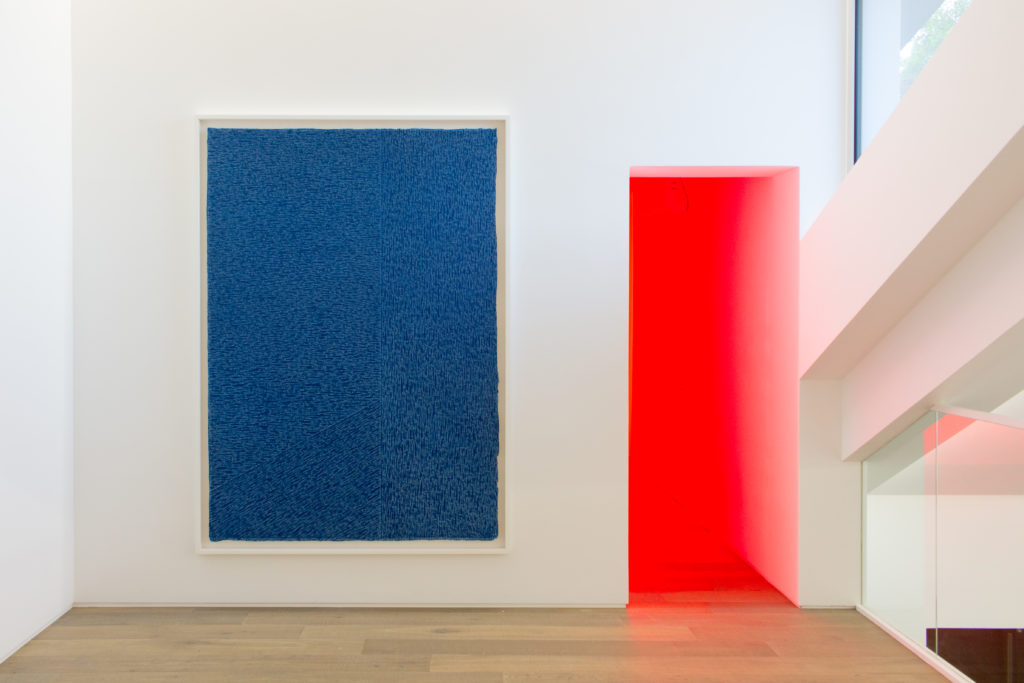
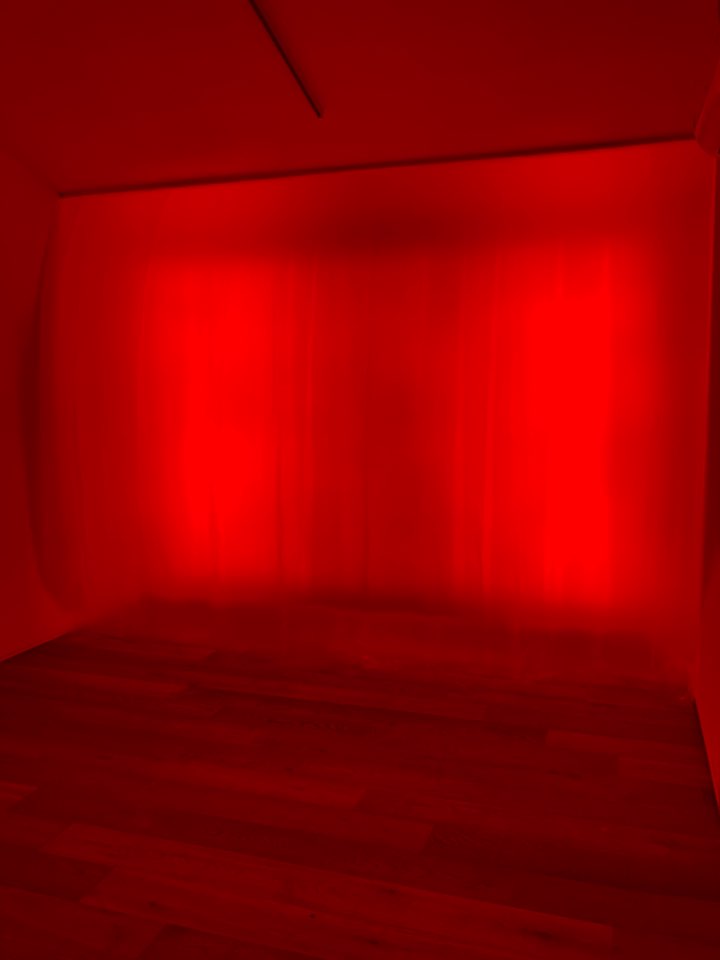 Red Room, 2019, Colored Vinyl, LED, Dimension Variable
Red Room, 2019, Colored Vinyl, LED, Dimension Variable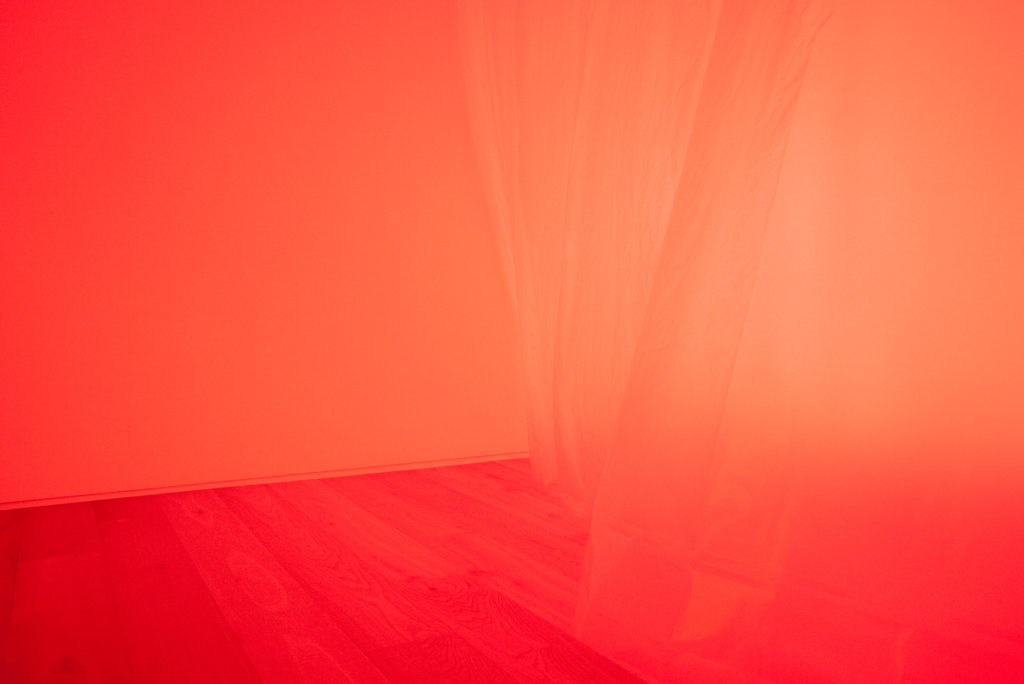 Red Room, 2019, Colored Vinyl, LED, Dimension Variable
Red Room, 2019, Colored Vinyl, LED, Dimension Variable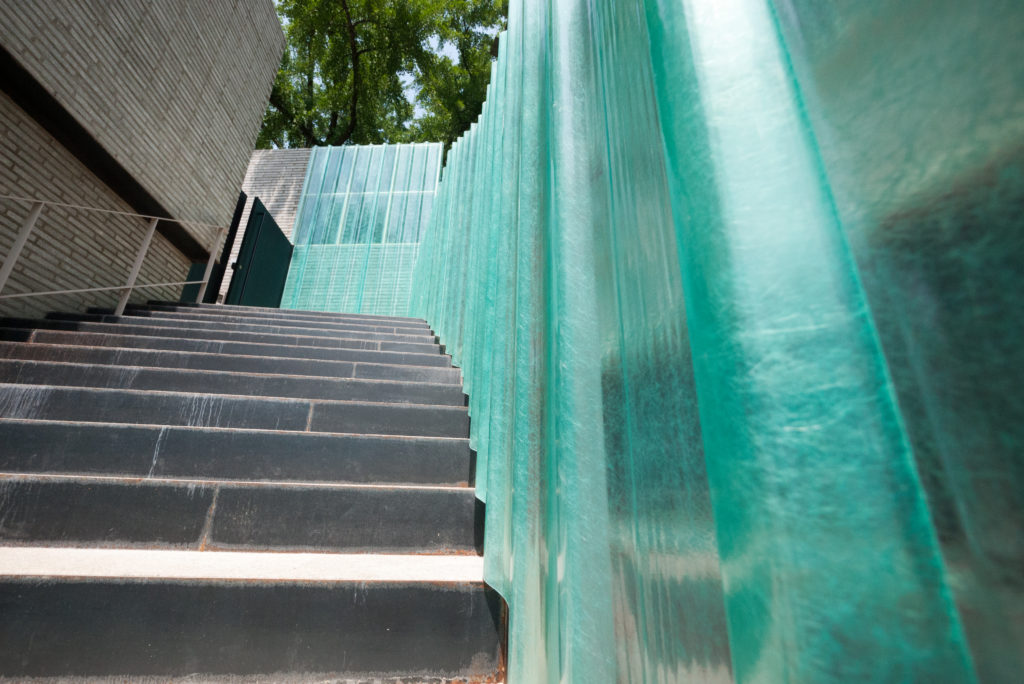 사라진 입구 (Disappear Entrance), 2019, Fiber reinforced plastic, wood frame, Dimension variable
사라진 입구 (Disappear Entrance), 2019, Fiber reinforced plastic, wood frame, Dimension variable
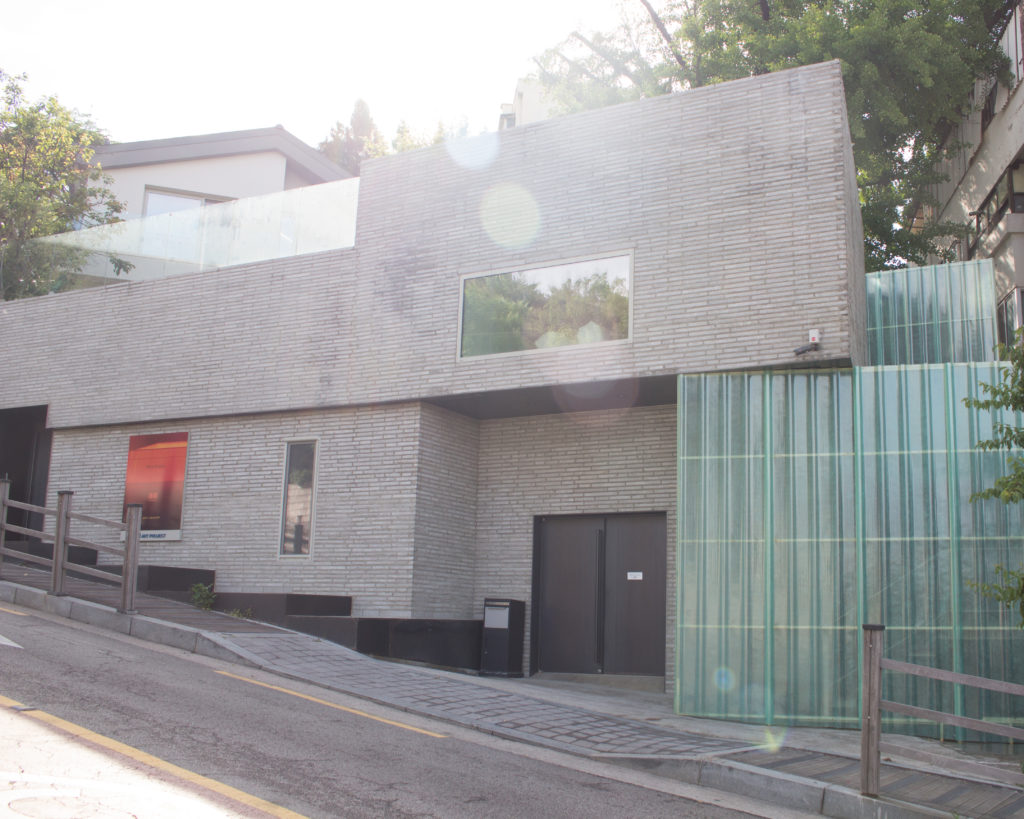 사라진 입구 (Disappear Entrance), 2019, Fiber reinforced plastic, wood frame, Dimension variable
사라진 입구 (Disappear Entrance), 2019, Fiber reinforced plastic, wood frame, Dimension variable
 Working progress of X Mobile
Working progress of X Mobile
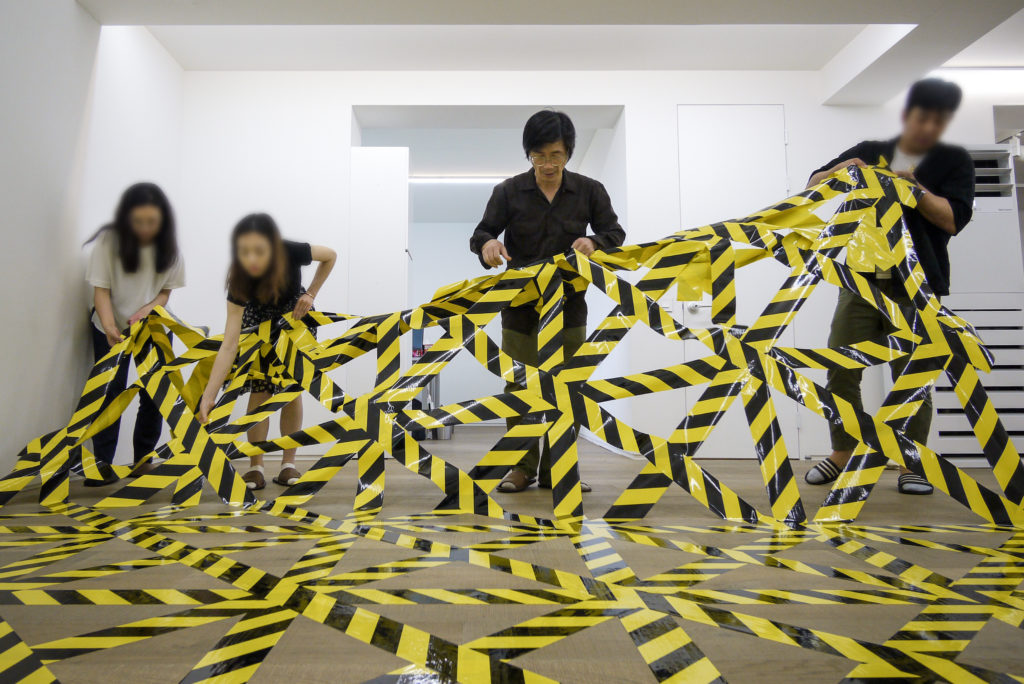 Working progress of X Mobile
Working progress of X Mobile
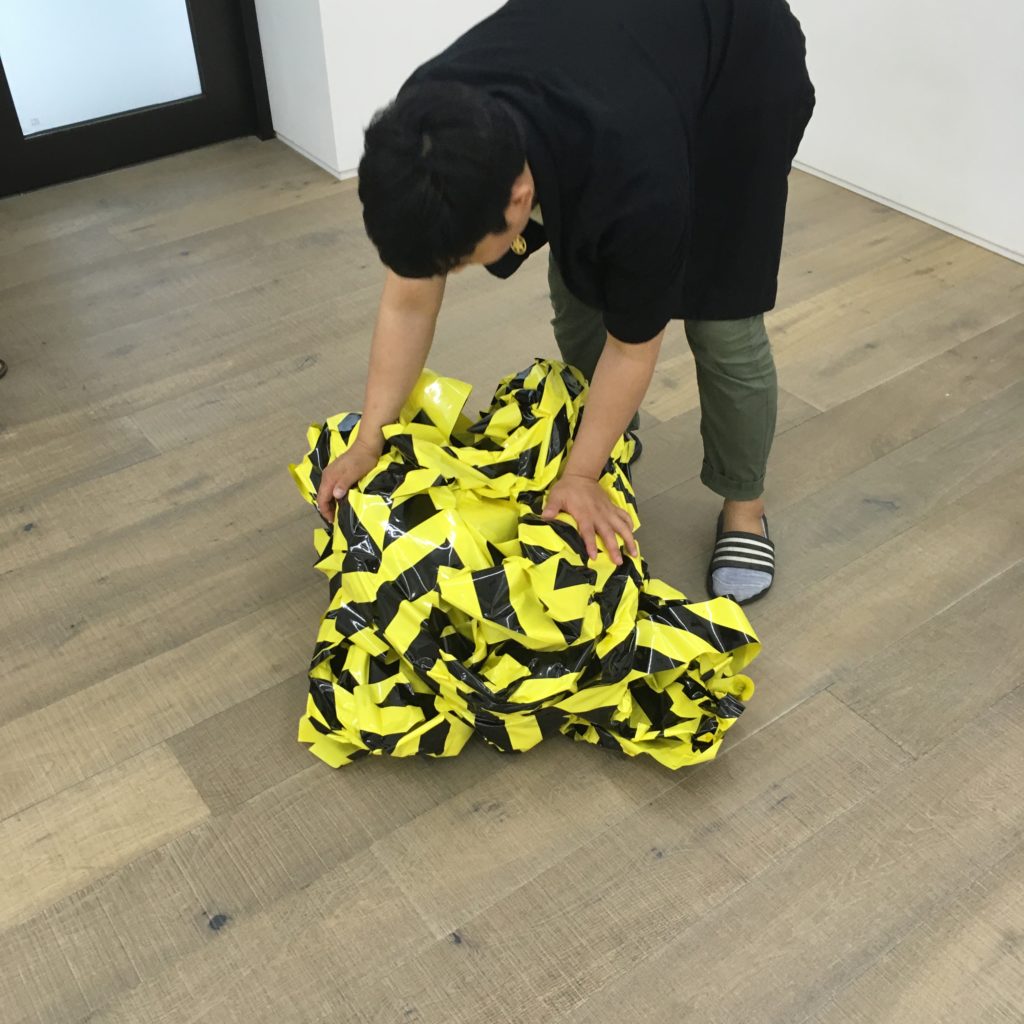 Working progress of X Mobile
Working progress of X Mobile
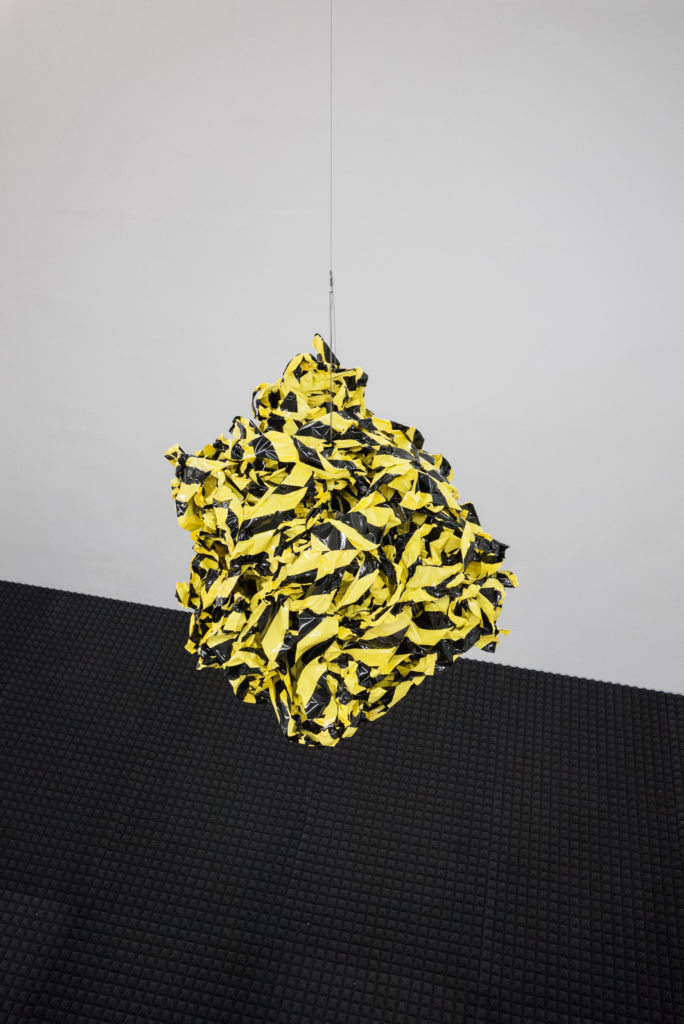 X Mobile, 2019, Tape, wire, stainless steel, Ø 130 cm
X Mobile, 2019, Tape, wire, stainless steel, Ø 130 cm


